Get Ready for the Future! 10 Mind-Blowing Advances in Technology That Will Change Our World
Are you ready for the future? Technology has made incredible advancements in recent years, and the possibilities for our world are seemingly endless. Take a look at 10 of the most mind-blowing advances in technology that will shape our lives in the years to come.
From artificial intelligence to 3D printing, we’ll explore these groundbreaking technologies and their potential to revolutionize our world. So get ready – the future is here!
1) Augmented Reality

Augmented reality (AR) is a type of technology that superimposes digital elements onto a user’s view of the real world.
People can experience augmented reality through the use of headsets, phones, or other devices. Industries such as gaming, shopping, entertainment, education, and many others use this technology.
AR technology can be used to enhance a user’s experience of the world around them by providing additional digital information. For example, AR can provide information about a product or show directions to a destination. AR has the potential to make everyday tasks more efficient and enjoyable.
Augmented reality lets gamers interact with virtual items as if they were real. This creates an immersive experience and enhances the user’s experience with the game.
In addition, educators can use AR to allow students to view 3D models of concepts they are studying and interact with them in a tangible way. This can help students understand complex topics more easily.
Overall, augmented reality has the ability to modify our worldview and offer new experiences. It is an exciting technology that will continue to evolve in the future and no doubt will have a huge impact on our lives.
2) Virtual Reality
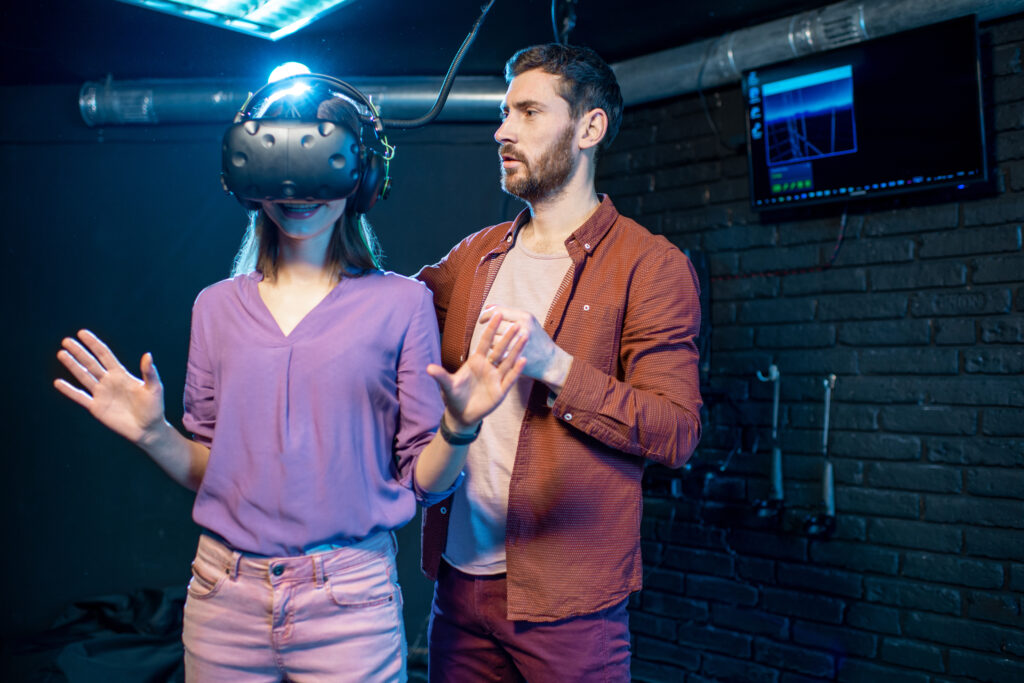
Virtual Reality (VR) is an interactive computer-generated experience that simulates a 3D environment.
This type of technology has been around since the early 1960s, but it wasn’t until recently that it has become more mainstream. With the help of advances in computer graphics, the ability to generate realistic virtual environments has grown exponentially.
Today, Virtual Reality is being used for a wide range of applications, from gaming and entertainment to healthcare and education. Gamers can fully immerse themselves in a virtual world and engage with it. VR is also being studied for treating PTSD, autism, and other mental health disorders and delivering virtual learning experiences.
VR will continue to revolutionize how we interact with the world. Google, Microsoft, and Facebook invest extensively in this technology and release new products annually. Virtual Reality will be essential in the future as more applications are developed and more people are exposed to it.
3) Artificial Intelligence
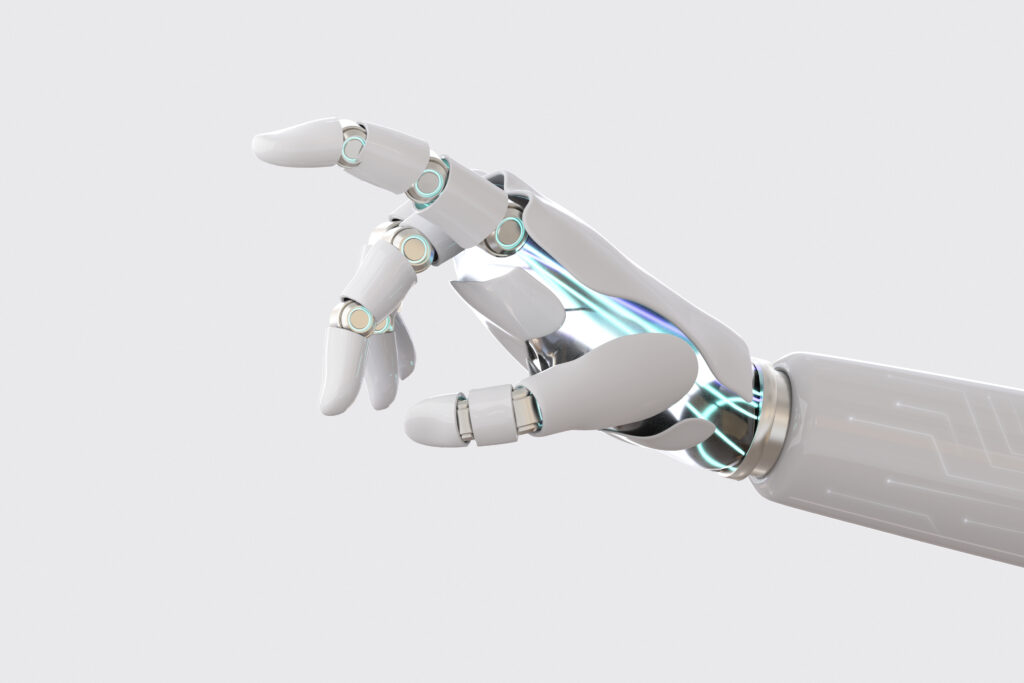
As technology continues to evolve, artificial intelligence (AI) has become one of the most talked-about advances of recent times.
AI is the ability for machines to think and act like humans. A wide range of industries, from healthcare to retail, use it to help streamline processes and make decisions.
AI can be used in a number of ways, such as: recognizing images or objects; understanding natural language; carrying out automated tasks; and making predictions based on data.
For example, the medical industry uses AI to diagnose diseases, detect cancer cells in MRI scans, and interpret patient data faster than ever before. Marketing and advertising industries also use it to predict consumer behaviors, personalize customer experiences, and automate complex processes.
The possibilities for AI are virtually endless. As its capabilities continue to grow, so too does the potential for AI to transform our lives. We have only scratched the surface of what AI can do, and it is certainly an exciting area to watch as technology continues to advance.
4) 5G Networks
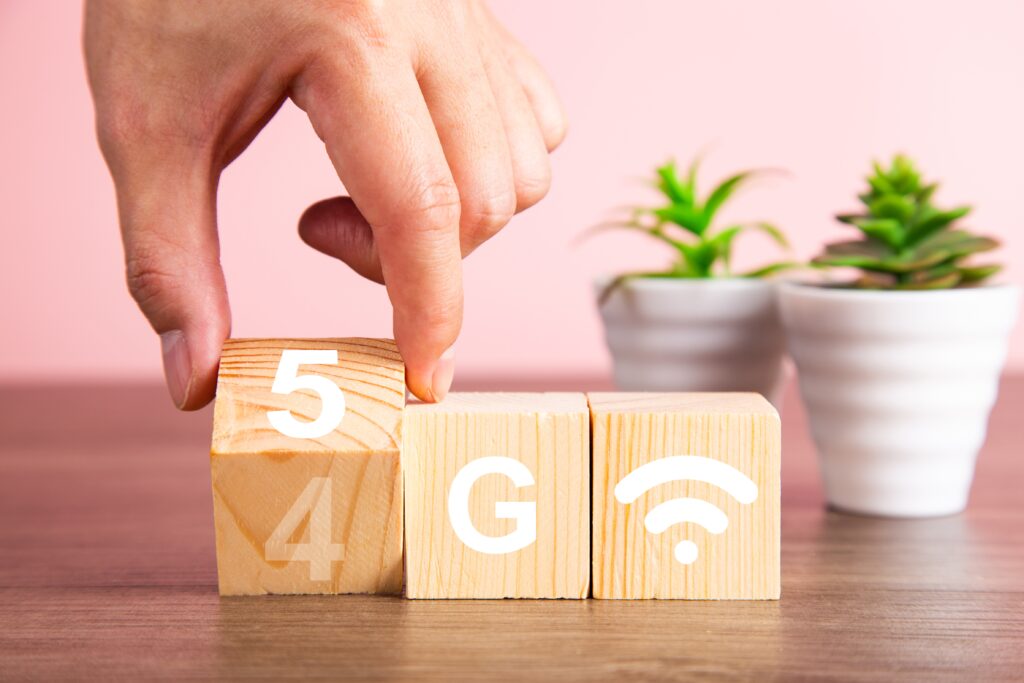
5G networks are the latest advancement in wireless communications technology and will revolutionize how we access and use the internet.
5G networks are faster than 4G networks, allowing users to access data at up to 100 times the speed. This means that users can access data quicker, stream HD videos without buffering, and take part in interactive applications without any lag time.
5G networks also boast wider coverage areas, meaning that more people can access the same network with fewer towers and antennas. Traditional broadband technologies underserve rural areas, making this increased coverage especially important for them.
Finally, greater network capacity in 5G networks allows for more devices to connect to the network simultaneously than traditional networks. This increased capacity makes it possible to connect more people to the internet at once, which can help reduce inequalities of access.
Overall, 5G networks are a significant advancement in wireless communications technology and will revolutionize the way we access and use the internet. By providing faster speeds, wider coverage areas, and increased capacity, 5G networks are sure to change our world for the better.
5) Self-Driving Cars
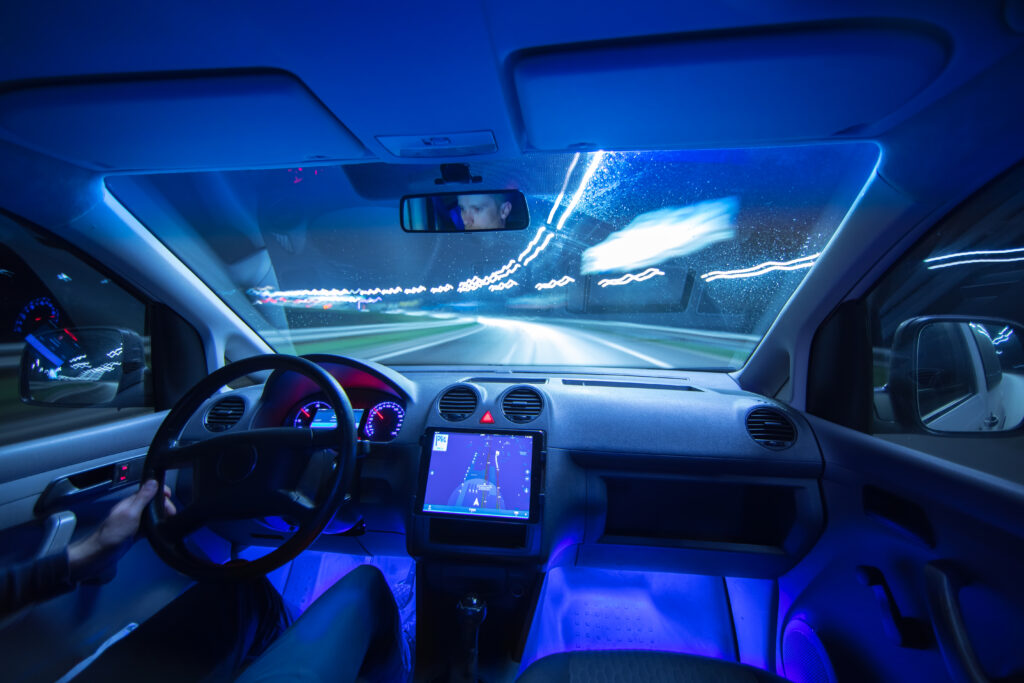
The idea of self-driving cars is one of the most exciting advancements in technology today.
A self-driving car, also known as an autonomous vehicle, is a vehicle capable of sensing its environment and navigating without human input. Self-driving cars are revolutionizing the way we think about transportation and are quickly becoming one of the most popular trends in the auto industry.
It uses a combination of sensors, cameras, and artificial intelligence (AI) algorithms to detect their environment and make decisions about where to go and how to maneuver in traffic. Self-driving cars offer improved safety, efficiency, convenience, and freedom from having to drive. They could potentially reduce the number of car accidents and help reduce traffic congestion in cities.
The potential of self-driving cars has attracted significant investment from technology companies and automakers alike, who are eager to bring this technology to the mainstream. Automakers such as Tesla, Ford, and General Motors have already released semi-autonomous cars that can operate without human intervention in certain situations. In the near future, we can expect to see fully autonomous vehicles on public roads.
Self-driving cars offer the potential to change the way people get around and reduce their dependence on traditional forms of transportation. It’s an exciting technology that has the potential to revolutionize the way we move and interact with our environment.
6) Quantum Computing
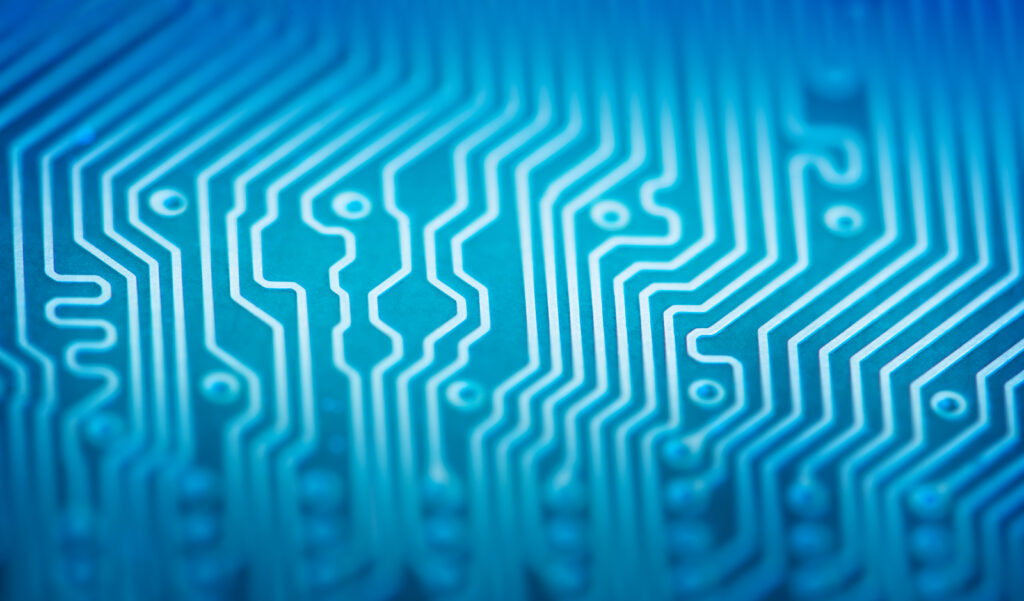
Quantum computing has been a hot topic in the world of technology over the past few years. This revolutionary form of computing has the potential to revolutionize many aspects of our lives and revolutionize the way we use computers.
Quantum computing uses quantum mechanics and its principles to process information. It uses superposition to represent a lot of data. Quantum computing could solve complicated issues that regular computers could not.
Some of the potential applications for quantum computing include cryptography, machine learning, chemistry, and other advanced fields. In addition, quantum computing could revolutionize areas like drug development and artificial intelligence, as it could increase processing speed and accuracy exponentially.
The future of quantum computing is still uncertain, as it is currently in its infancy. However, experts believe that it could revolutionize the way we process and store data, and could lead to advances in artificial intelligence, cryptography, and much more. In short, quantum computing could be one of the most significant advances in technology in the next decade, and its impact on our world could be profound.
7) Blockchain

The blockchain is one of the most revolutionary and game-changing technologies of our time.
Invented by a person or group of people under the pseudonym Satoshi Nakamoto, it is the backbone of the popular cryptocurrency Bitcoin. The blockchain is essentially a public ledger that records transactions securely and in real-time, eliminating the need for any middlemen. This revolutionary technology has been used to create new and innovative services, such as smart contracts, which are self-executing agreements that can be programmed and enforced on the blockchain.
The blockchain is also making its mark in the world of finance, with banks and other financial institutions exploring the potential of this technology to revolutionize the banking sector. For example, the blockchain could potentially allow for faster payments and secure money transfers between accounts. Furthermore, it could also provide enhanced security measures for personal information and sensitive data.
On top of all that, the blockchain has the potential to change how governments operate and interact with their citizens. It could allow for more secure and transparent record-keeping while reducing costs associated with managing government data.
The possibilities of blockchain are virtually endless, as more and more companies and organizations start to recognize its potential. With its wide-ranging applications and implications, blockchain is certainly one of the most promising technologies of our time.
8) Internet of Things
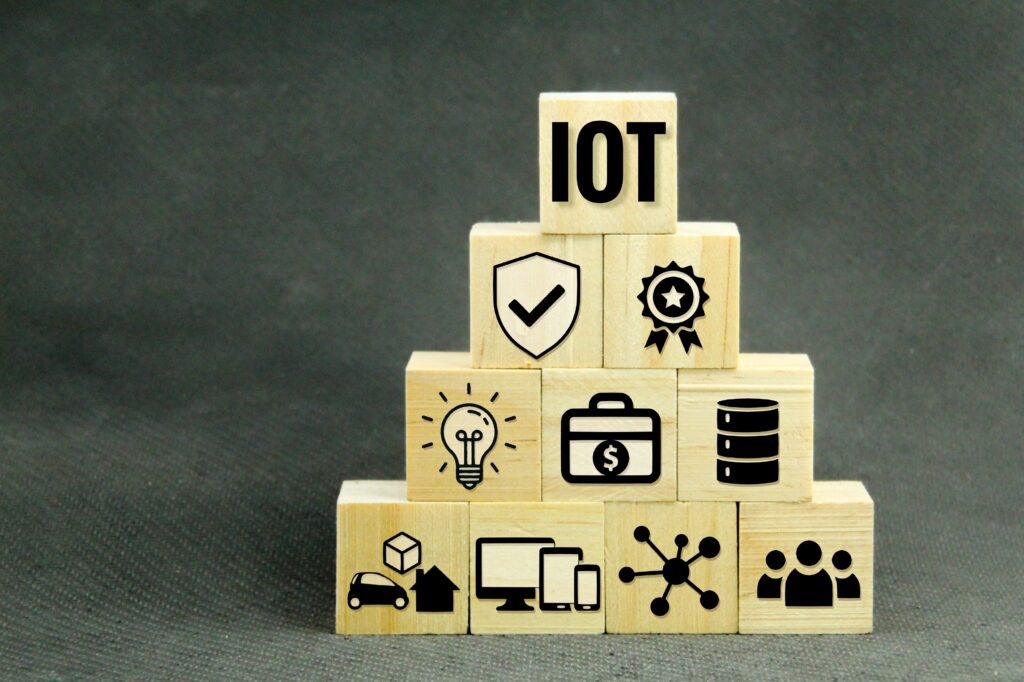
The Internet of Things (IoT) is a term used to describe the ever-growing network of physical objects – such as cars, appliances, and wearables – that are connected to the internet, and can collect and exchange data. In essence, IoT is transforming everyday objects into smart devices.
The potential for IoT is vast. Smart homes, for example, allow homeowners to remotely control their lights, thermostat, and security systems. Wearable devices like smartwatches and fitness trackers can provide real-time data about a user’s health and activity levels. Smart cities use sensors and other technology to collect data and streamline services like parking, waste management, traffic management, and energy management.
The IoT promises a more efficient, secure, and cost-effective future. But it also brings with it a unique set of challenges related to privacy and security. Security protocols must be updated regularly to ensure data is protected from malicious attacks. Organizations also need to be mindful of how they use and share data collected through the IoT.
Overall, the Internet of Things will have a transformative effect on our lives. From improved healthcare to better energy management and smarter cities, the possibilities are endless.
9) Robotics
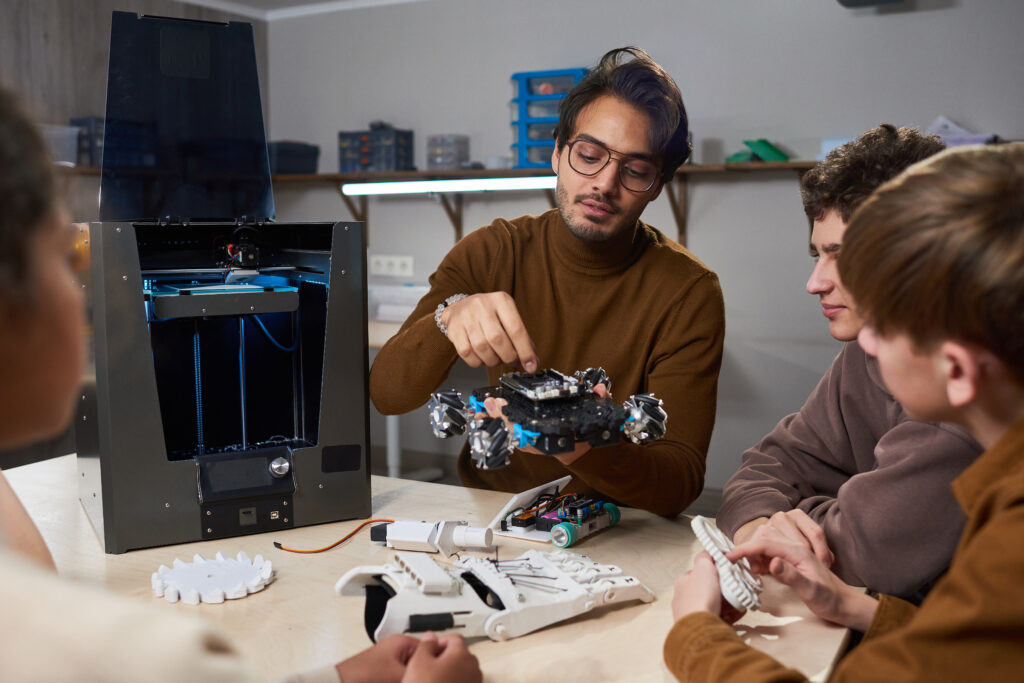
Robotics is one of the most exciting advances in technology that will help shape our future.
Robots have the potential to revolutionize many industries, from manufacturing and agriculture to medicine and education. They can perform tasks faster and more accurately than humans, and their AI capabilities are continually increasing.
Robots are already being used in various applications, such as performing surgery, searching for survivors in disaster areas, and assisting the elderly in their daily activities. In the coming years, robotics will become even more commonplace, and many industries will benefit from the use of robots. For example, in the manufacturing industry, robots can work faster and with greater precision than human workers. This will reduce labor costs while improving quality.
In addition to manufacturing and industrial applications, robotics has the potential to improve transportation, healthcare, and even education. Companies are already testing autonomous vehicles on roads around the world, and they could eventually replace much of the traffic-related tasks currently performed by humans.
In healthcare, robots can help with medical procedures and diagnostics, reducing the time needed for treatments. In education, robots can be used to create immersive learning environments that can help students better understand concepts.
Robotics is an area of technology that is quickly evolving, and its potential for improving our lives is nearly limitless. From manufacturing to healthcare to education, robots will play an important role in our future.
10) 3D printing

3D printing, also known as additive manufacturing, is a process of creating three-dimensional objects from a digital file.
It has been used in industries such as aerospace, automotive, and healthcare for years, but recently its use has become more mainstream. 3D printing allows users to create complex structures and designs with much greater accuracy and detail than traditional manufacturing methods.
3D printing has changed the way we approach manufacturing in a number of ways. It can be used to create parts and components that would be impossible or prohibitively expensive to make using traditional methods. In addition, 3D printing is more efficient since it eliminates the need for manual labor or specialized machinery.
In recent years, 3D printing technology has seen an explosion of innovation. Advances in materials and software have made it possible to create objects with unprecedented levels of detail and complexity. Companies now use 3D printing to create complex parts for aerospace, automotive, and medical applications, as well as to produce consumer goods such as toys and jewelry.
3D printing is revolutionizing the way we approach design and manufacturing. It has the potential to transform industries and revolutionize the way we think about products. As the technology advances further, it will continue to reshape our world in exciting ways.
Selling a property? Reach out to us today to learn more about our professional photography services and other marketing!
For more content, check out our new podcast here!
